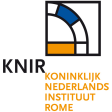Summary
- In the summer seasons 2012 to 2014 a team of Canadian, American and Italian archaeologists carried out an extensive regional field survey to the west of the Basentello River in the territory of Genzano di Lucania, Banzi, and Irsina. The decision to focus on this territory was determined by its proximity to the Imperial estate at San Felice/Vagnari (Gravina in Puglia). They fully covered 75 sq km with teams of 4-5 field walkers spaced 15-25 meters apart that surveyed line transects in each field unit. In total 183 surface scatters (notionally, ‘sites’) from the Neolithic to the Middle Ages were identified. These material scatters were mapped in the field by means of GPS positioning systems and mobile devices (i.e. tablets), and were integrated through the GIS platform.
Project Dates
- 2012 - 2014
Periods
- No period data has been added yet
- 8000 BC
- 6000 BC
- 1100 AD
- 2000 AD
- The survey was conducted by team members walking parallel transects 15 – 25 m apart, depending on surface visibility. Sites were identified when a minimum of 20 artifacts within a quarter hectare was encountered. Sites are divided into collection units of 0.25 ha and different collection strategies were implemented depending on material density (i.e. general or systematic).
Other Comments
- This record has been produced by the FASTI Online Survey team
- The regional survey was designed to examine the change in settlement patterns from the Iron Age to the Late Antique period, to identify possible changes in population, and to put the imperial estate at San Felice/Vagnari into a regional context. More specifically, the Basentello team aimed at understanding how this estate may have been integrated into local commercial and other social networks by analyzing diachronic changes in settlement patterns and associated population fluctuations, particularly from the Hellenistic to the Medieval period.
- Social Sciences and Humanities Research Council of Canada; The J.E.A Crake Foundation; Mount Allison University; Saint Mary’s University; Banca Popolare di Puglia e Basilicata
Director
-
Director
- Myles McCallum, Saint Mary’s University (Canada)




![Edit [ed]](/survey/skins/fastisur/images/plusminus/edit.png)
![View [view]](/survey/skins/fastisur/images/plusminus/view.png)